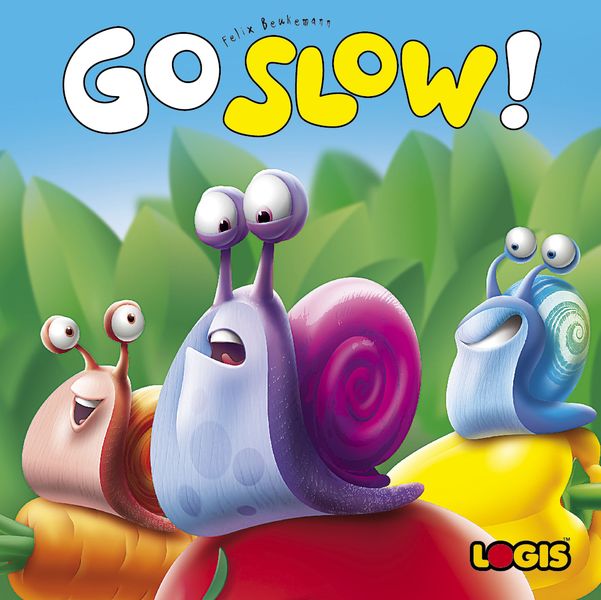Go Slow! (2020) Board Game
Go Slow! is a fun and engaging board game designed by Felix Beukemann and published by LOGIS in in 2020. It is a card game that is suitable for children aged 4 and above, making it a great option for families looking for a game to enjoy together. The game features adorable animal characters and simple gameplay mechanics that make it easy for young children to understand and play.
Game Components of Go Slow!
– Fruit and vegetable cards
– Sleeping snail cards
– Black numbered cards
– Red numbered cards with an arrow
How To Setup Go Slow!
Setting up Go Slow is quick and straightforward. Players join the four racing tracks in the middle of the table and place the snails at the start. Each player is issued with two cards as a starting hand.
Gameplay Mechanics and Game Objective
Mechanics:
– Fruit and vegetable cards: Jump to the next unoccupied corresponding square.
– Sleeping snail cards: Allow a player to miss a turn.
– Black numbered cards: Move the player’s snail along the specified number of spaces, pushing any snails in front.
– Red numbered cards with an arrow: Move the slowest snail along the track, pushing any snails in its way.
Game Objective:
Player Experience
Go Slow offers a simple yet engaging gameplay experience. The play-a-card, draw-a-card mechanic is easy to grasp, even for young players. However, the counterintuitive nature of aiming to finish last can take some time for younger players to understand. The game is highly interactive, especially with three or four players, as snails are frequently moved by other players’ actions. Games are quick, lasting around 12-15 minutes, making it ideal for families with short attention spans.
Pros
Cons
Personal Thoughts on Go Slow!
Go Slow is an excellent choice for families looking to introduce their young children to board games. It is recommended for children aged 4-8 and is designed to be fun and accessible. While it may not be as appealing to older players when played alone, it shines in a family setting where the mix of strategy and luck keeps everyone entertained. The game’s quick playtime and beautiful components make it a great addition to any family game night. However, as children grow older, around 7 or 8 years old, the game might not see as much play.
We are supported by our audience. When you purchase through links on our site, we may earn an affiliate commission, at no extra cost for you. Learn more.

